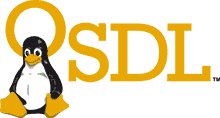A Continuing Work in Progress: The State of Linux 2006
Greasing The Linux Skids To Smooth Delivery
More widespread adoption of Linux desktops demands equally widespread usability for this OSS platform to thrive. And in fact, numerous community, industry, and government-sponsored initiatives are underway to streamline the interface, and to facilitate interaction between end-users and Linux desktop applications. Three of these participating organizations are easily identified by their icons in Figure 3.
The Open Usability and Better Desktop organizations are two examples of the effort to improve the interaction between end-users and desktop necessary to permit Linux to gain exposure to and support from a broader, less technically sophisticated audience. On a much larger scale, strategic partnerships between two major Asian Linux distributors and government entities has established a perceived champion to counter Microsoft product lines. It's called Asianux, and even features select cities in China and elsewhere devoted entirely to Linux. Indeed, the Linux desktop threat continues to escalate in increasingly interesting ways.
Figure 3: BetterDesktop, FreeDesktop, OpenUsability Icons
OpenUsability.org represents one of the smaller initiatives, serving as a clearinghouse for software developers and usability experts to promote ease-of-use and improved integration of OSS projects. At the time of this writing, OpenUsability boasts 140 projects, but continues to advertise a need for OSS developer and usability expert support to fill positions outstanding since 2004. As a collaborative effort, the OpenUsability project helps shape Linux and related applications for the benefit of the entire community.
Figure 4: OSDL Icon
The Open Source Development Lab (OSDL), whose icon appears in Figure 4, is a non-profit consortium of top-tier manufacturers that includes Hitachi, IBM, Hewlett-Packard, Intel and others. It serves as an interface between the Linux customer collective and IT industry leaders. Through OSDL sponsorship and strategic vendor partnerships, the organization seeks to bring Linux onto the corporate desktop throughout the United States and Japan. This has proven instrumental to the success of Linux desktop initiatives in other similarly-aligned organizations such as the OpenUsability consortium. Such cooperative efforts involving both hardware and software vendors in a formal structure clearly demonstrate deep levels of involvement from key industry players, who make a convincing show that they'd like to take Linux seriously on the desktop.
In April 2006, the OSDL held an OSDL Printing Summit in an attempt to both simplify and standardize the Linux desktop printing experience for end-users, desktop developers, professional designers, OS distributors and hardware manufacturers. This summit called on the services of the OpenUsability organization to coordinate the interface design process for print-related tasks, for everything from installation and configuration, to operation and maintenance. This is one of many collaborative efforts to direct the right resources and attention to resolving the general user-unfriendliness of Linux that has long kept it from becoming a permanent fixture on corporate and end-user desktops.
Get Tom's Hardware's best news and in-depth reviews, straight to your inbox.
In late 2005, Novell launched the Better Desktop initiative as a component of its new openSUSE project, to conduct usability testing for OSS Linux applications. This initiative provides resources to Linux developers who cannot otherwise afford to test their work holistically, to help them distinguish design failures from successes. This project has already conducted tests on 200 Linux desktop applications, and offers on-line footage of the results for the benefit of the greater community. With this sort of forward thinking and corporate funding from Novell, the Linux desktop is getting some much-needed attention that will help it prove itself in corporate and end-user markets.
Current page: Greasing The Linux Skids To Smooth Delivery
Prev Page Linux On The Desktop Next Page Decreasing The Knowledge Burden On Everyday UsersEd Tittel is a long-time IT writer, researcher and consultant, and occasional contributor to Tom’s Hardware. A Windows Insider MVP since 2018, he likes to cover OS-related driver, troubleshooting, and security topics.


